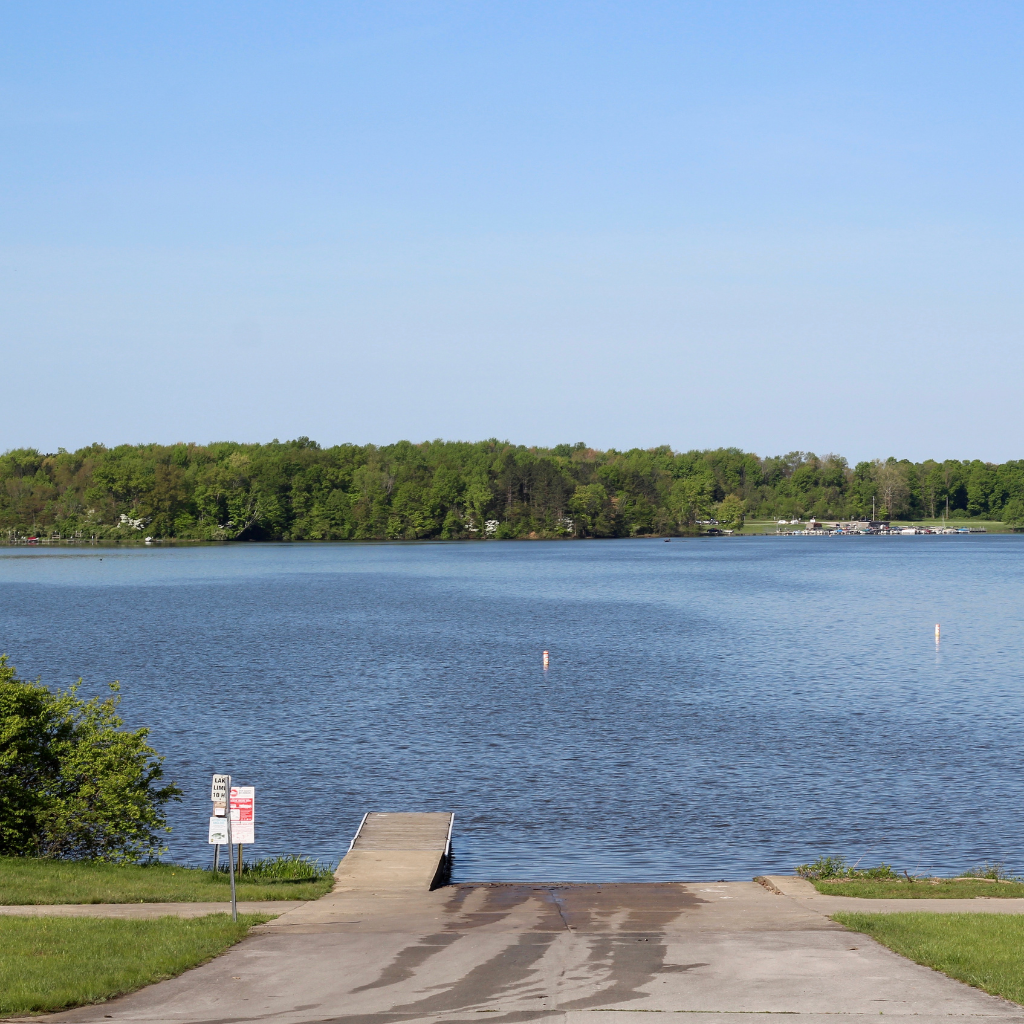Boating alone is sometimes a way to find freedom on the lake, but in most cases taking an extra set of hands is well advised.
- Make sure you have your trailer licensed and well serviced. Check the tire pressure and the wheel bearings periodically.
- Your boat should be secured to the trailer with a bow strap to the winch and a strap that secures the prop shaft to both sides of the trailer frames.
Before heading for the launch, make sure you have a valid Boating License as well as…
- A life jacket for each person
- An anchor and anchor line
- A certified safety kit
- Fully charged starter battery
- A charged cell phone
- Enough fuel in the tank for your journey. Expect fuel prices on the water to be significantly higher.
- A paddle and bailing bucket
- A fire extinguisher and first aid kit
- Practice your “back up” skills. Your ability will be tested at the ramp.
Launch
- Park the boat and trailer prior to heading for the ramp.
- Detach the strut strap.
- Add lines to the forward and aft cleat.
- Determine which side of the boat will be “dockside” on the ramp, Install bumper on this side.
- If equipped, make sure the drain plug is installed, and water pump seacock is open.
- Turn the master battery switch on, if equipped.
- Check oil level via dip stick.
- Test the bilge pump operation through the manual and float switch.
Proceeding to ramp
- Follow launch rules, which is usually 1st come, first serve to the ramp. This is not a race, most people are very accommodating.
- Back down just short of the water, disconnect winch strap, hand the bow and stern line to your 1st mate and have them walk down the dock as you enter the water.
- Trailer should be about 1 foot away from the dock.
- Once the boat is floating, 1st mate pulls the boat back and towards the dock.
- Check bilge for any incoming water. Make sure the bilge pump comes on.
- If excessive water is seen, prepare to reload the boat on the trailer and pull it from the water.
- If not, slowly leave the ramp and park. On your return tie the boat to the dock cleats to your satisfaction.
- Most important – tie the boat so it will not move forward once started.
- With battery power on, turn on bilge blower – 5 minute minimum
- Choke carb – manual or electric.
- Pump throttle
- Turn ignition key ( and starter button, if equipped )
- Once engine starts, set at idle and go to stern of boat to make sure water is flowing out exhaust ports. If not, shut down the engine.
- Once engine is running, check oil pressure. If there is none, shut the engine down.
- Monitor temperature gauge after running engine for a few moments. Should run at about 160-180. If it exceeds 200+ shut the engine down -check water flow
- If all system are go. 1st mate releases dock lines, boards the boat and stows the lines or safely secures them inside the boat.
- Push off and back up away from the dock. Most boats “walk’ to the left in reverse. Use that to your advantage if you plan to turn around.
- If space permits, spin the boat around so you can head out on the lake bow first.
- 1st Mate removes the fenders and stows them
- Continue to monitor gauges for normal operation and periodically check the bilge for water.
Make your journey a pleasurable one. Have fun and be safe!

